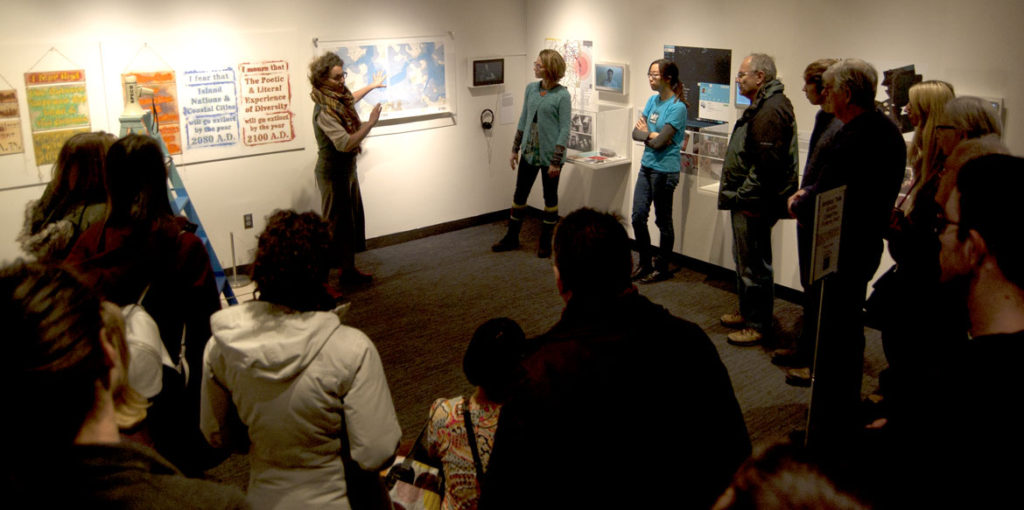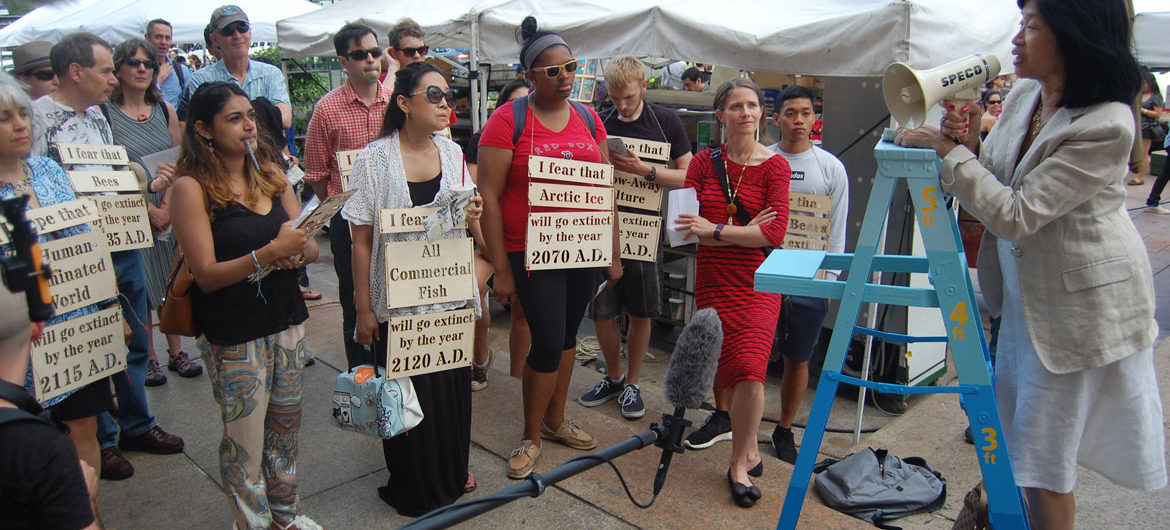By the end of this century, how will global warming and rising seas have changed Boston?
A lot more of it is expected to be under water—much as it was before human construction reshaped the city’s coastline. “When we looked at the climate change predictions for Boston for 2100, those maps look very much like the map from 1788,” artist Catherine D’Ignazio said during a talk at Cambridge’s MIT Museum on Jan. 6.
She was discussing “Boston Coastline: Future Past,” an installation documenting a walk she and artist Andi Sutton led around downtown Boston in 2015. It’s on view as part of the museum’s exhibit, “Big Bang Data,” exploring the intersections of culture, technology and society in our digital age, through April 1.
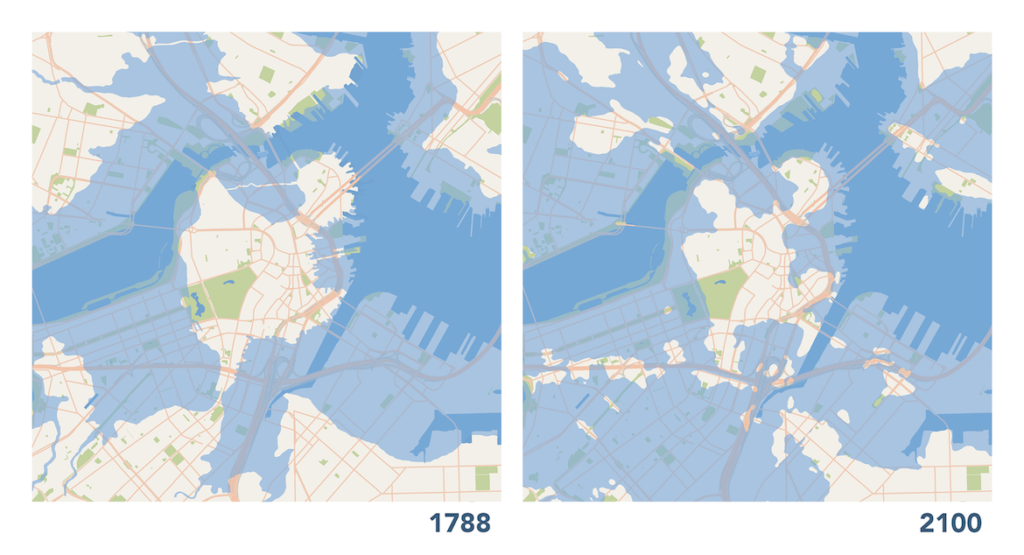
“We had a lot less land in 1788,” D’Ignazio said. “We filled it in. We came in and chopped off a lot of hills in Boston and filled in the Back Bay, the harbor area.” The coastline was also filled with gravel hauled in from 50 miles distant.
“The areas that we filled in, the areas that are human-created, are the areas most vulnerable to climate change,” D’Ignazio said. Their map predicting the 2100 Boston coastline includes a 7-foot storm surge—something like what greater Boston experienced in the recent Jan. 4 bombogenesis blizzard. “This is the worst-case scenario of water rise plus storm surge.”
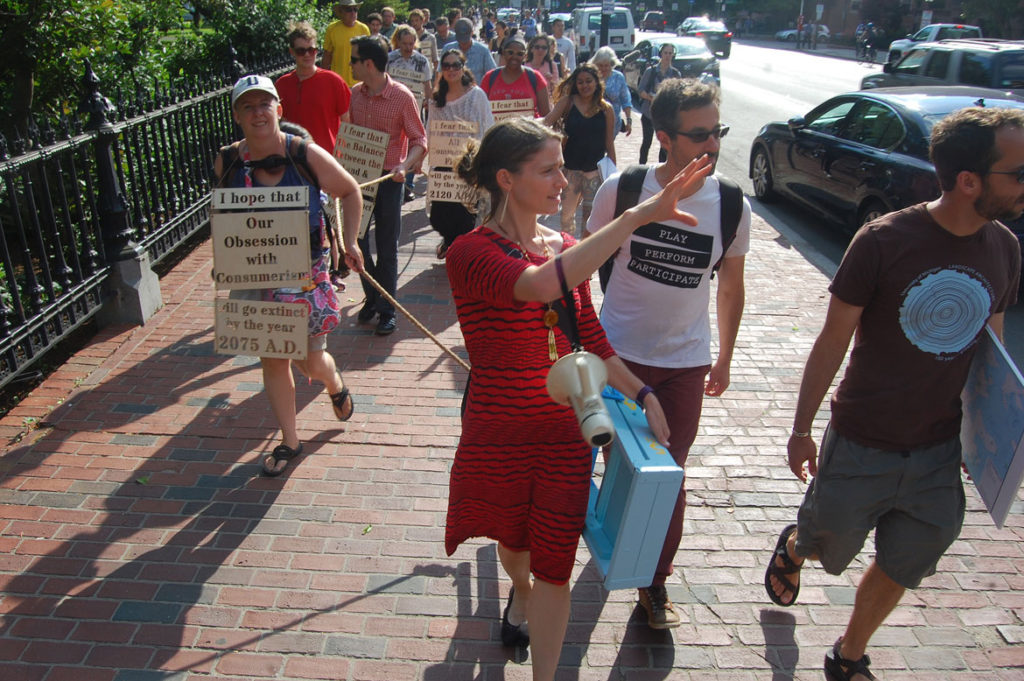
To “make people understand that with their bodies,” Sutton explained, they led a walking tour on June 19, 2015, beginning at the Boston Public Library in Copley Square and ending at Boston Common. “We called this a ‘walking data visualization,’” D’Ignazio said.
At stops along the way, performance artists, scientific experts and policy makers stood on a step ladder, at the height of projected sea level rise for that spot, and spoke about how human activity has changed Boston’s coastline historically and continues to alter it. “As you’re listening, climate change becomes much less abstract,” Sutton recalled.

The 40 participants in the 2015 walk were also invited to pick out wooden stencils to wear that spelled out “their hopes, fears and grief for the future.” Sutton wore signs reading: “I hope that / Fracking / will go extinct by the year 2025 A.D.” Others assembled signs saying: “I fear that / Bees / will go extinct by the year 2035 A.D.”; “I fear that / Arctic Ice / will go extinct by the year 2070 A.D.”; “I hope that / Our Obsession with Consumerism / will go extinct by the year 2075 A.D.”
“We’re creating a cultural history of the future based on extinction,” Sutton said at the MIT Museum. At the end of the walk, the messages were temporarily stenciled along a sidewalk in Boston Common using biodegradable pigmented sand, she said.
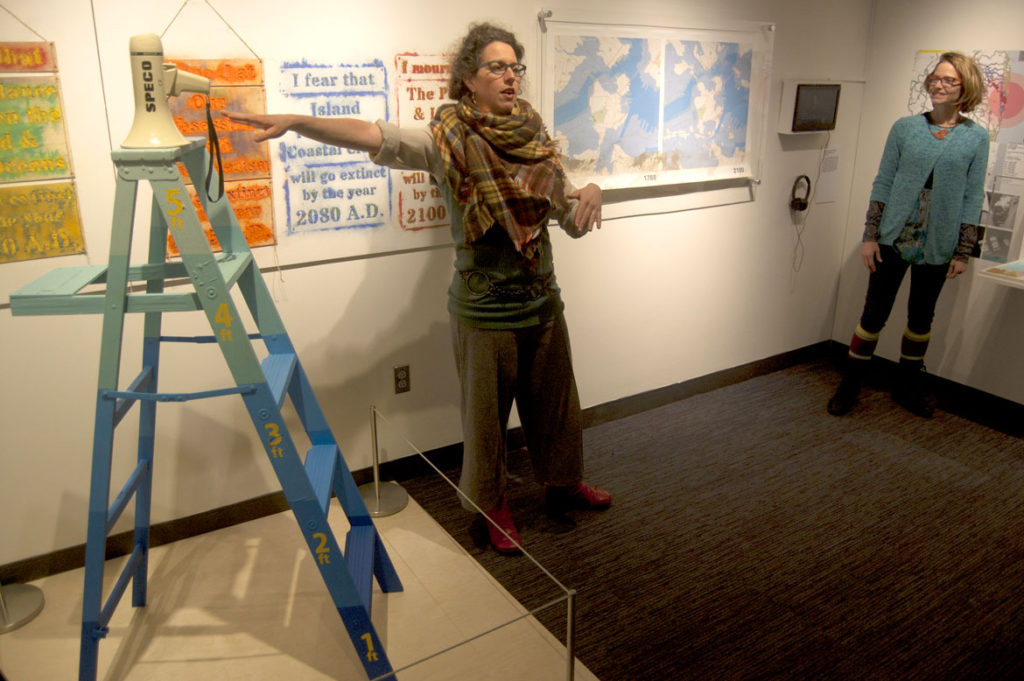
“The reason I choose a poetic medium,” Sutton said at MIT, “is what motivates me is opening up conversations, opening up possibilities and kinds of futures, opening up a space of vulnerability where we can then move towards a place of conversation.” She said, it’s “a bridge to find a way in and find a way through all the messy, complicated things that make us not want to think about it at all.”
One audience member asked what the city of Boston is doing now to address threats from global warming. “Even just since this most recent storm, there’s interest in building a seawall,” Sutton said. Though, she noted, that a seawall could push the storm surges onto poorer communities north and south of Boston. She said an MIT group has ideas for designing parklands to store and absorb more storm water and promote biodiversity. “That’s one engineering and design solution that’s giving me hope. I haven’t heard of a concrete political solution yet.”
Help us keep producing our great coverage of local arts by contributing to Wonderland on Patreon. And sign up for our free, weekly newsletter so that you don’t miss any of our reporting.
